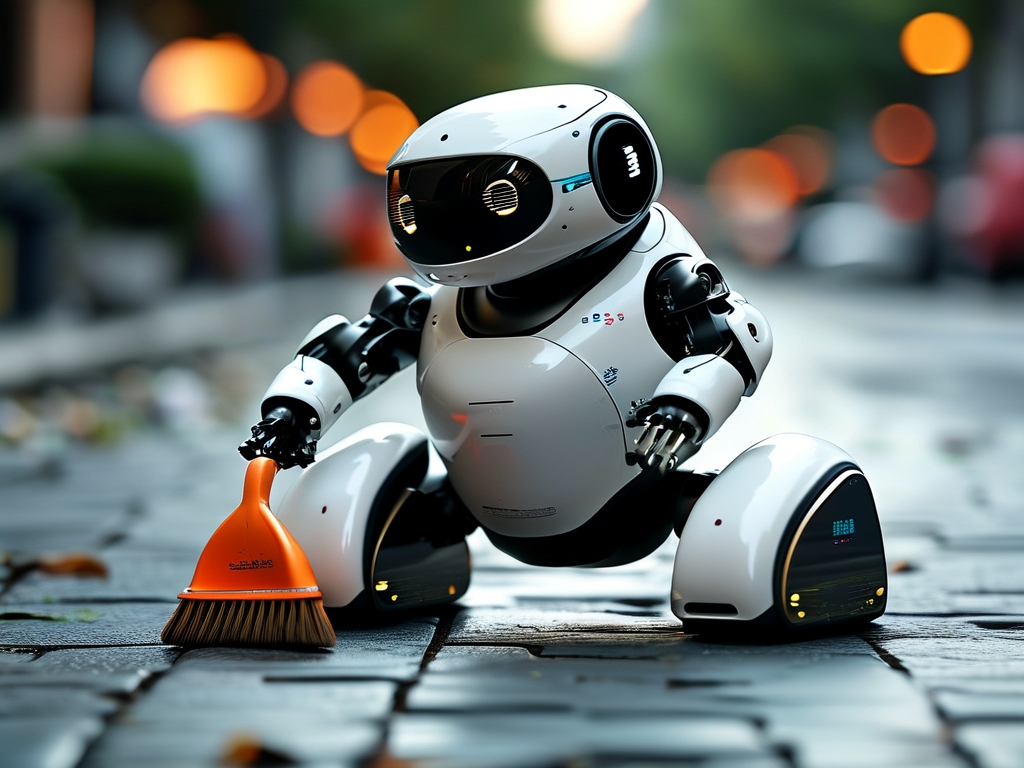In recent years, the integration of robotics into urban infrastructure has revolutionized traditional public services, and robotic street sweeping technology stands at the forefront of this transformation. Combining advanced sensors, artificial intelligence (AI), and autonomous navigation systems, robotic sweepers are redefining how cities maintain cleanliness. This article delves into the core principles behind this technology, exploring its components, operational mechanisms, and real-world applications.

1. Core Components of Robotic Street Sweepers
Robotic street sweepers rely on a synergy of hardware and software to perform their tasks. Key components include:
- Sensors: Equipped with LiDAR (Light Detection and Ranging), cameras, ultrasonic sensors, and GPS, these robots map their environment in real time. LiDAR creates 3D maps to detect obstacles, while cameras enable visual recognition of debris and pedestrians.
- Navigation Systems: Autonomous navigation is powered by algorithms like SLAM (Simultaneous Localization and Mapping). SLAM allows robots to build maps of unknown areas while tracking their own position within them, ensuring efficient path planning.
- Cleaning Mechanisms: Rotary brushes, vacuum systems, and waste storage compartments form the physical cleaning apparatus. Brushes dislodge dirt, vacuums collect fine particles, and onboard containers store waste until disposal.
- Power Supply: Most robotic sweepers use rechargeable lithium-ion batteries, offering 6–8 hours of operation. Some models employ solar panels for supplementary energy.
2. Autonomous Operation and AI Integration
The true innovation lies in the AI-driven decision-making process. Machine learning algorithms enable robots to:
- Classify Debris: Cameras and AI models distinguish between organic waste, plastic, and hazardous materials, adjusting cleaning intensity accordingly.
- Adapt to Dynamic Environments: By processing real-time data from sensors, robots avoid collisions with pedestrians, vehicles, or unexpected obstacles. For example, if a cyclist approaches, the sweeper pauses or reroutes.
- Optimize Routes: AI analyzes historical data to prioritize high-traffic or litter-prone areas, reducing redundant coverage and energy consumption.
3. Environmental and Efficiency Benefits
Robotic sweepers offer significant advantages over manual or traditional mechanical methods:
- Reduced Carbon Footprint: Electric-powered robots produce zero emissions during operation, aligning with sustainability goals.
- 24/7 Operation: Unlike human workers, robots can function overnight, ensuring continuous cleanliness without labor fatigue.
- Precision Cleaning: Targeted debris collection minimizes water and energy waste, as seen in models that activate brushes only when detecting dirt.
4. Challenges and Limitations
Despite their potential, robotic sweepers face hurdles:
- High Initial Costs: Advanced sensors and AI systems make these robots expensive to deploy.
- Weather Sensitivity: Heavy rain or snow can interfere with sensors, limiting functionality in harsh climates.
- Public Acceptance: Concerns about job displacement and privacy (e.g., cameras recording public spaces) require careful policy addressing.
5. Case Studies and Future Trends
Cities like Singapore and San Francisco have pioneered robotic sweeping programs. Singapore's "Smart Nation" initiative uses autonomous sweepers in business districts, reducing manual labor by 30%. Meanwhile, startups like Brain Corp and Tennant Company are developing AI models capable of predictive cleaning-anticipating litter patterns based on events or weather.
Looking ahead, advancements in swarm robotics (multiple robots collaborating) and 5G connectivity promise faster data processing and larger-scale deployments. Hybrid models combining sweeping with waste sorting or air quality monitoring are also emerging.
Robotic street sweeping technology exemplifies how automation can enhance urban living. By merging cutting-edge hardware with intelligent software, these robots not only improve cleanliness but also pave the way for smarter, greener cities. As the technology matures, addressing cost and societal challenges will be critical to unlocking its full potential.

